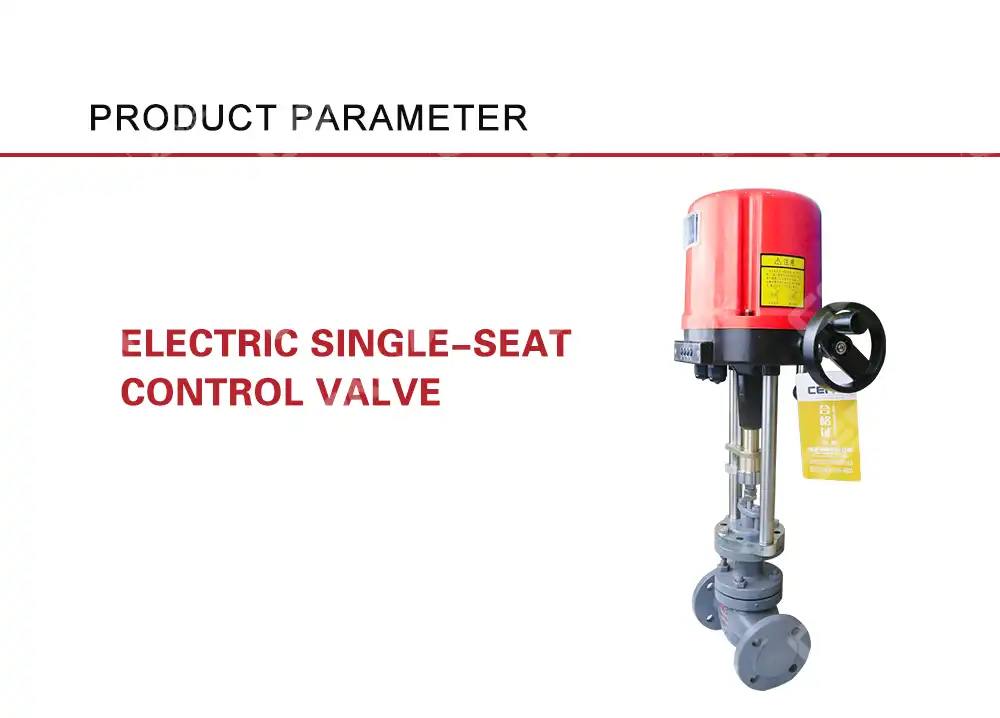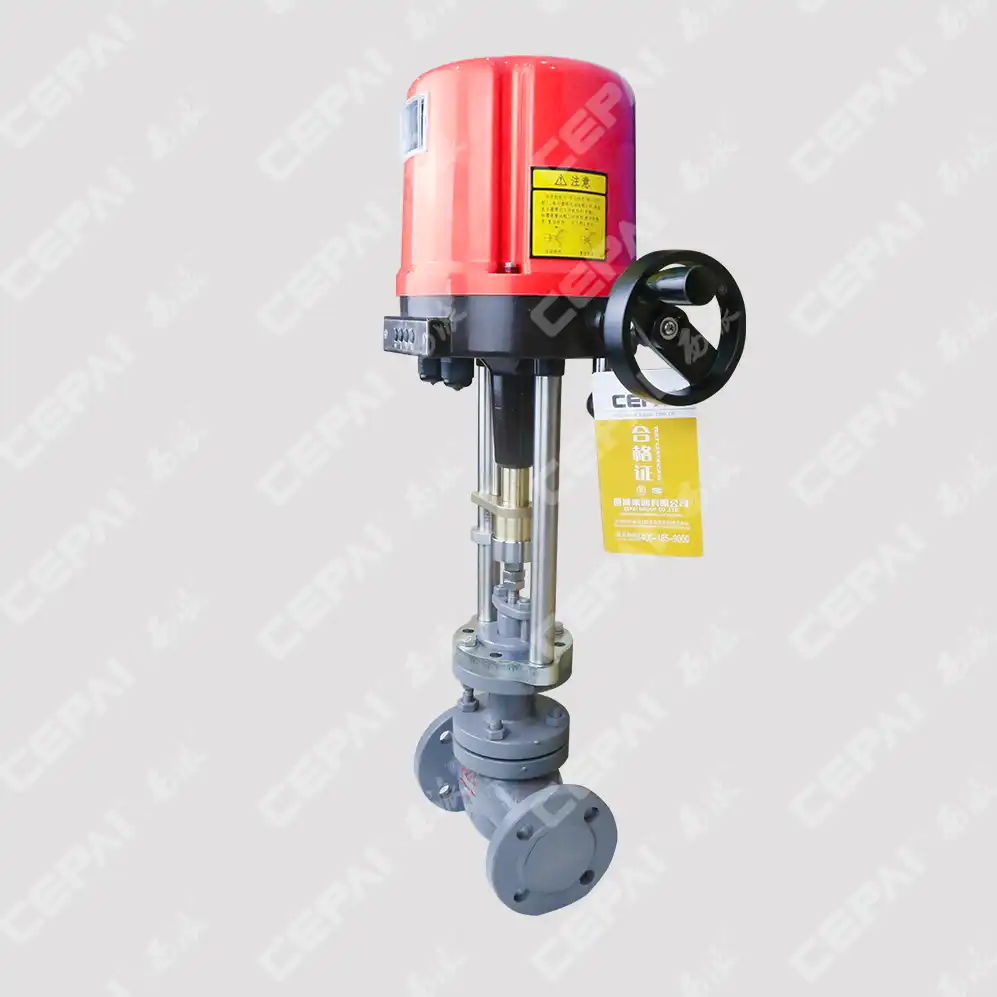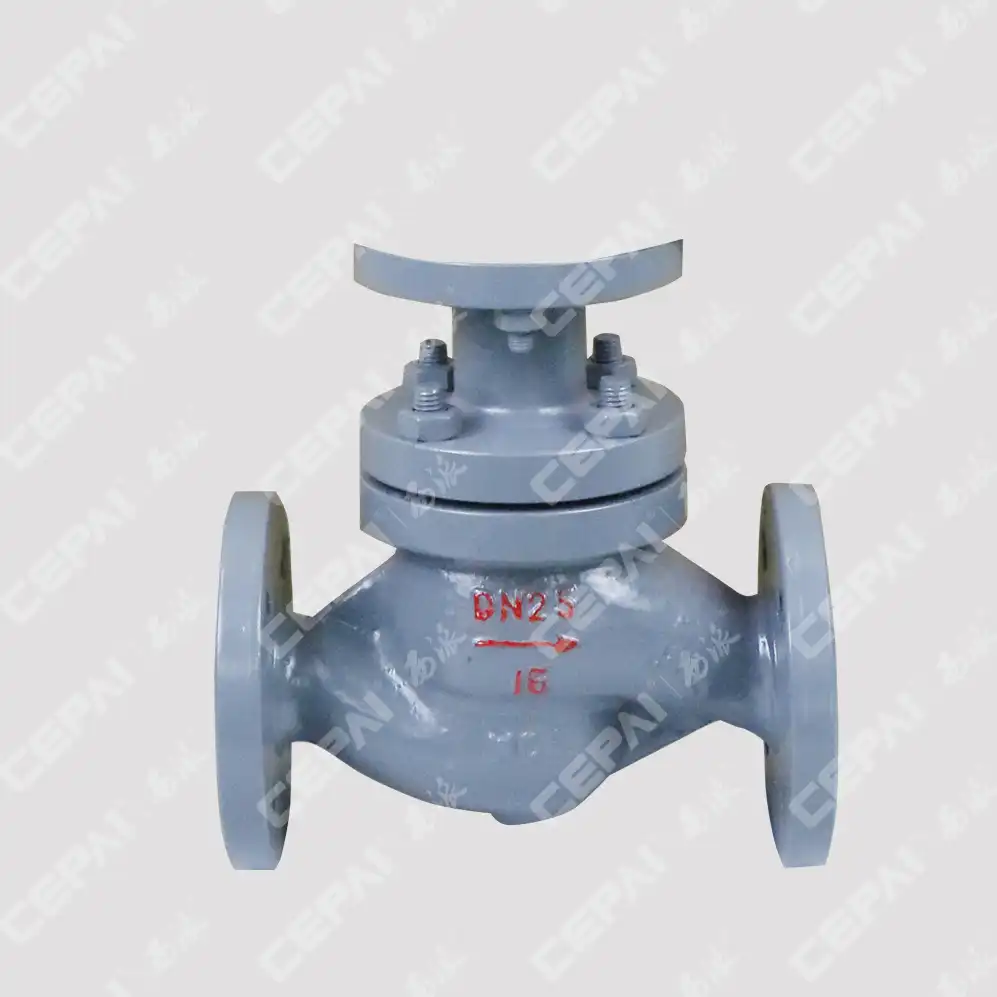What You Must Know About Control Valve Safety Standards?
In today's high-stakes industrial environments, understanding control valve safety standards isn't just about compliance—it's about ensuring operational integrity, protecting personnel, and safeguarding your investments. Control Valves serve as critical components in fluid handling systems across petrochemical, power generation, and manufacturing sectors, making their reliable and safe operation paramount. As industrial processes become increasingly complex, the regulatory landscape surrounding Control Valves continues to evolve, introducing more stringent requirements and comprehensive safety protocols that demand careful attention from facility managers, engineers, and procurement specialists.

Key International Safety Standards Governing Control Valves
IEC 61508 and SIL Certification Requirements
The International Electrotechnical Commission (IEC) 61508 standard represents one of the most significant frameworks for ensuring functional safety of electrical, electronic, and programmable electronic safety-related systems. For Control Valves, this standard introduces the concept of Safety Integrity Levels (SIL), which quantifies the risk reduction provided by safety functions. When selecting Control Valves for critical applications, understanding SIL certification is essential as it indicates the valve's reliability in preventing dangerous failures. The certification process involves rigorous testing that simulates worst-case scenarios to determine failure rates and modes. CEPAI Group recognizes this importance, which is why their Control Valves undergo comprehensive SIL certification processes, as evidenced by their Ball Valve, Butterfly Valve, and Control Valve SIL Certifications. These certifications confirm that CEPAI's Control Valves meet precise reliability targets and can be integrated into safety instrumented systems without compromising overall safety integrity. For procurement specialists, this certification provides quantifiable assurance that the Control Valves will perform their intended safety functions when needed, especially in emergency shutdown scenarios where failure could result in catastrophic consequences.
API Standards for Oil and Gas Applications
The American Petroleum Institute (API) has developed a comprehensive set of standards specifically addressing Control Valves in oil and gas applications, where extreme pressures, temperatures, and hazardous media handling demand exceptional reliability. API 6A, 6D, and 16C standards, all of which CEPAI Group has obtained certification for, establish rigorous requirements for wellhead Control Valves, pipeline Control Valves, and choke and kill system components, respectively. These standards address critical aspects including material selection, pressure ratings, testing procedures, and quality management systems. For Control Valves operating in these environments, compliance with API standards ensures they can withstand the harsh conditions while maintaining operational integrity. The standards emphasize fugitive emissions control, pressure containment reliability, and emergency shutdown capabilities—all crucial for preventing environmental contamination and workplace hazards. CEPAI's adherence to these standards, coupled with their APIQ1 certification for quality management systems, demonstrates their commitment to manufacturing Control Valves that meet the highest industry expectations. For organizations operating in the oil and gas sector, selecting Control Valves with proper API certifications represents a non-negotiable aspect of risk management strategy and regulatory compliance.
ISO Standards and Global Harmonization
The International Organization for Standardization (ISO) has established several standards that address Control Valves' design, manufacturing, testing, and performance characteristics across global markets. Among these, ISO 5208 specifies pressure testing requirements for industrial valves, while ISO 10434 addresses bolted bonnet steel gate valves for petroleum and natural gas industries. CEPAI Group's adherence to ISO 9001, 14001, and 45001 demonstrates their commitment to comprehensive quality, environmental, and occupational safety management systems that support their Control Valves manufacturing processes. The global harmonization of these standards ensures that Control Valves meet consistent safety benchmarks regardless of where they are manufactured or deployed. This standardization is particularly valuable for multinational operations seeking uniform safety performance across diverse geographical locations. For procurement professionals, understanding ISO compliance simplifies the qualification process when sourcing Control Valves from international suppliers like CEPAI Group. Furthermore, these standards facilitate integration with broader facility safety management systems, creating a cohesive approach to risk mitigation. As industrial processes become increasingly interconnected, the role of standardized Control Valves that meet global safety benchmarks becomes ever more critical in maintaining operational continuity and protecting against systemic failures that could cascade throughout complex industrial systems.

Critical Safety Features in Modern Control Valves
Emergency Shutdown Capabilities
Emergency shutdown capabilities represent perhaps the most crucial safety feature in modern Control Valves, serving as the last line of defense against catastrophic failures in process systems. Advanced Control Valves, like those manufactured by CEPAI Group, incorporate fail-safe mechanisms that automatically move the valve to a predetermined safe position (typically fully closed or fully open, depending on the application) when control signals or power are lost. This functionality is achieved through sophisticated spring-return actuators, stored energy systems, or redundant power supplies that ensure the Control Valves can execute their safety functions even under adverse conditions. The response time of these emergency systems is critical—CEPAI's emergency cut-off valves are engineered to respond within milliseconds when process parameters exceed safe thresholds. Additionally, modern Control Valves often feature partial stroke testing capabilities, allowing operators to verify emergency shutdown functionality without completely interrupting processes. This innovation in Control Valves technology enables more frequent safety verification without costly downtime. For facilities handling hazardous materials or operating high-pressure systems, these emergency shutdown capabilities provide essential protection against equipment damage, environmental releases, and personnel injuries. When evaluating Control Valves for critical applications, procurement specialists should carefully consider not only the presence of emergency shutdown features but also their reliability, response time, and testing provisions to ensure they will perform as expected during actual emergency conditions.
Pressure Relief and Protection Systems
Pressure management represents a fundamental safety concern in fluid control systems, with overpressure events potentially leading to catastrophic failures. Modern Control Valves incorporate sophisticated pressure relief and protection systems that provide multi-layered defense against such scenarios. These systems in advanced Control Valves typically include pressure sensors that continuously monitor system conditions, relief mechanisms that automatically activate when predetermined thresholds are exceeded, and bypass circuits that divert flow away from sensitive components during pressure surges. CEPAI Group's high-pressure double disc check valves exemplify this approach by preventing dangerous backflow that could compromise system integrity while maintaining pressure boundaries. The materials selected for pressure-containing components in these Control Valves undergo rigorous qualification testing to ensure they maintain structural integrity even under extreme conditions. Furthermore, modern pressure protection systems in Control Valves feature redundancy in critical components, ensuring that no single failure can compromise the overall pressure management strategy. The importance of proper pressure relief extends beyond equipment protection—it directly impacts workplace safety by preventing ruptures that could release hazardous materials or high-energy fluids. For procurement specialists evaluating Control Valves for high-pressure applications, understanding the pressure protection capabilities, relief capacity, response characteristics, and certification status of these safety systems should be considered essential factors in the selection process. CEPAI's CNAS nationally recognized laboratory provides rigorous testing of these pressure management features, ensuring their Control Valves deliver reliable performance even under the most demanding pressure conditions.
Leak Detection and Containment Features
Environmental protection and operational safety increasingly depend on sophisticated leak detection and containment features integrated into modern Control Valves. These systems represent critical safeguards against fugitive emissions, toxic releases, and process fluid losses that could compromise both environmental compliance and worker safety. Advanced Control Valves now incorporate multiple sealing barriers, with primary and secondary seals working in tandem to prevent media escape. CEPAI Group's valve designs feature specialized packing materials and configurations optimized for specific media and operating conditions, ensuring effective containment across diverse applications. Beyond passive containment, today's Control Valves often include active leak detection systems that utilize pressure sensing between seal barriers, acoustic monitoring for internal leakage detection, and thermal imaging compatibility for external inspection. These technologies enable early identification of developing leak pathways before they evolve into significant safety hazards. For applications involving particularly hazardous media, Control Valves may incorporate additional containment features such as bellows seals that eliminate dynamic sealing surfaces entirely, or specialized collection systems that safely capture and contain any emissions that might escape primary seals. The performance of these leak detection and containment systems is verified through standardized testing protocols, with many Control Valves now certified to emissions standards like ISO 15848 or API 624, which establish quantifiable performance benchmarks. For organizations prioritizing environmental stewardship and workplace safety, selecting Control Valves with advanced leak detection and containment features represents a strategic investment that addresses both regulatory compliance requirements and corporate sustainability objectives while minimizing the risk of costly incidents related to media release.
Implementing a Comprehensive Control Valve Safety Program
Risk Assessment and Valve Selection Methodology
Implementing a robust risk assessment and valve selection methodology forms the foundation of any effective Control Valves safety program. This systematic approach begins with a comprehensive Process Hazard Analysis (PHA) that identifies potential failure modes, consequences, and probability factors specific to each Control Valves application within the facility. For critical service Control Valves, techniques such as Failure Mode and Effects Analysis (FMEA) and Layer of Protection Analysis (LOPA) help quantify risks and determine appropriate Safety Integrity Level (SIL) requirements. CEPAI Group's technical consultation services assist clients in navigating this complex evaluation process, ensuring appropriate Control Valves selection based on scientific risk assessment rather than arbitrary factors or historical preferences. The methodology must consider not only normal operating conditions but also startup, shutdown, and potential upset scenarios where Control Valves may experience their most challenging demands. Material selection represents another crucial aspect of this process, with Control Valves materials needing to withstand process media chemistry, temperature extremes, and pressure cycling without degradation that could compromise safety functions. Modern selection methodologies also incorporate total cost of ownership calculations that balance initial procurement costs against long-term reliability, maintenance requirements, and potential failure consequences. For organizations implementing or updating their Control Valves safety programs, documenting the selection methodology creates an auditable trail that demonstrates due diligence in addressing safety concerns. CEPAI's experience across diverse industries including petrochemical, power generation, and metallurgy provides valuable insights into application-specific risk factors that might otherwise be overlooked during the selection process, ensuring their Control Valves are precisely matched to the safety requirements of each unique installation.
Preventive Maintenance and Inspection Protocols
Establishing rigorous preventive maintenance and inspection protocols ensures that Control Valves maintain their safety integrity throughout their operational lifecycle. Unlike reactive maintenance approaches that address problems after they occur, preventive programs for Control Valves focus on identifying and mitigating potential failures before they impact safety performance. These protocols typically establish condition-based monitoring regimes that track key performance indicators such as stem packing wear, seat leakage rates, actuator response times, and positioning accuracy. CEPAI Group's after-sales service and maintenance programs incorporate these preventive approaches, utilizing diagnostic tools that can detect developing issues in Control Valves before they manifest as functional failures. Modern inspection protocols for safety-critical Control Valves often employ non-destructive testing techniques including ultrasonic thickness measurements to assess erosion rates, magnetic particle testing for crack detection, and vibration analysis to identify mechanical looseness or misalignment. The frequency and depth of these inspections should be calibrated to the Control Valves' criticality classification, with more intensive regimes applied to valves whose failure could have severe safety consequences. Digital documentation systems now enable trend analysis across multiple inspection cycles, helping maintenance teams identify gradual degradation that might otherwise go unnoticed. For organizations seeking to optimize their maintenance resources, risk-based inspection approaches allow for targeted allocation of effort to those Control Valves representing the highest safety concerns. CEPAI's remote monitoring and intelligent service capabilities extend these preventive approaches by enabling continuous oversight of valve performance characteristics, with automated alerts when parameters drift beyond acceptable ranges. By implementing comprehensive preventive maintenance and inspection protocols, organizations can substantially reduce the probability of Control Valves failing on demand when their safety functions are needed most.
Training and Competency Requirements for Operations Personnel
Developing comprehensive training and competency requirements for personnel who interact with Control Valves represents a frequently overlooked yet essential component of valve safety programs. Even the most sophisticated Control Valves with advanced safety features cannot compensate for operational errors resulting from inadequate knowledge or skills. Effective training programs for Control Valves operations should combine theoretical understanding of valve principles with hands-on practical experience under both normal and abnormal conditions. CEPAI Group's installation, debugging, and training services ensure that client personnel develop the necessary competencies to safely operate and maintain their Control Valves throughout their operational lifecycle. Training curricula should address valve-specific knowledge areas including actuation methods, failure modes, control loop tuning principles, diagnostic interpretation, and emergency response procedures. For safety-critical applications, periodic competency assessments help verify that knowledge retention remains adequate and that skills haven't degraded over time. Simulation-based training proves particularly valuable for preparing operators to respond appropriately during abnormal situations involving Control Valves, allowing them to practice emergency procedures without risking actual equipment or processes. Documentation of training completion and competency verification creates an auditable trail that demonstrates regulatory compliance and organizational due diligence. As Control Valves technology continues to advance, incorporating increasingly sophisticated electronic components and diagnostic capabilities, ongoing professional development becomes essential to ensure operator knowledge remains current. CEPAI's technical support team provides this continuing education component, keeping client personnel informed about evolving best practices and technological advancements related to Control Valves safety. By investing in comprehensive training and competency development, organizations not only reduce the likelihood of human errors contributing to Control Valves failures but also empower their personnel to identify potential safety issues before they escalate into significant incidents.

Conclusion
Understanding and implementing control valve safety standards represents a critical responsibility for industrial facilities seeking operational excellence and risk mitigation. By adhering to international standards, incorporating advanced safety features, and developing comprehensive safety programs for Control Valves, organizations can significantly reduce their vulnerability to costly incidents while ensuring regulatory compliance. CEPAI Group stands as your trusted partner in this journey, offering exceptional durability, high-precision control performance, and robust safety features backed by international certifications. Ready to elevate your facility's safety profile with industry-leading Control Valves? Contact our engineering team today at cepai@cepai.com for personalized solutions that protect what matters most.
References
1. International Electrotechnical Commission. (2023). IEC 61508: Functional Safety of Electrical/Electronic/Programmable Electronic Safety-related Systems. Geneva, Switzerland: IEC Central Office.
2. American Petroleum Institute. (2022). API 6D: Specification for Pipeline and Piping Valves. Washington, DC: API Publishing Services.
3. International Organization for Standardization. (2021). ISO 10434: Bolted Bonnet Steel Gate Valves for the Petroleum, Petrochemical and Allied Industries. Geneva, Switzerland: ISO.
4. Summers, A. E. (2024). Safety Instrumented Systems: Design, Analysis, and Justification. New York: ISA Publishing.
5. Smith, P., & Zappe, R. W. (2023). Valve Selection Handbook: Engineering Fundamentals for Selecting the Right Valve Design for Every Industrial Flow Application. Oxford: Butterworth-Heinemann.
6. American Society of Mechanical Engineers. (2023). ASME B16.34: Valves - Flanged, Threaded, and Welding End. New York: ASME.

Get professional pre-sales technical consultation and valve selection services, customized solution services.

About CEPAI


